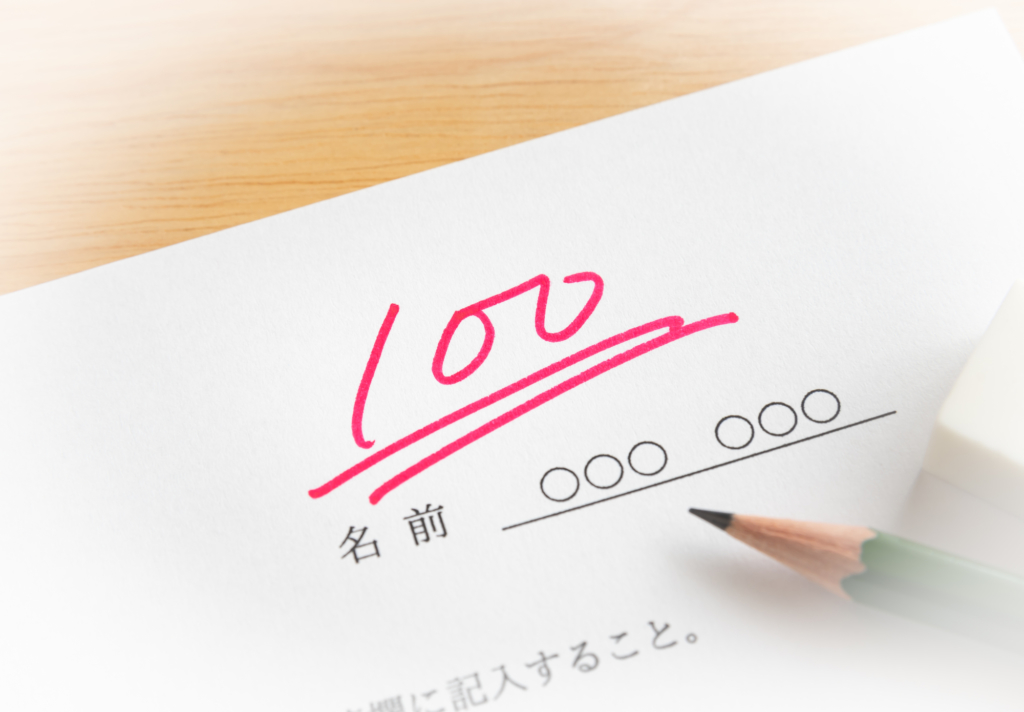Getting hired by a Japanese company can be a long and complicated process. One aspect of the entire application process you rarely hear about is the aptitude test. It’s an exam that all job seekers, Japanese and foreign alike, are required to take and pass in order to get a job offer from many Japanese companies. In this article, we will briefly talk about Japanese aptitude tests in general, as well as go into more detail about the SPI (Synthetic Personality Inventory) test: the most popular variety used by thousands of firms in Japan.
What Are Japanese Aptitude Tests?

The system of lifetime employment, once very popular in Japan, has been on the decline in recent years, but many companies still expect that a job applicant will want to stay with them for many years. This presents a unique challenge. In Japan, most people enter the workforce straight out of college, and at that age, it’s very hard to determine if a candidate has the necessary basic knowledge and skills to do a particular job, or whether their personality will be a good fit for the company. After all, a person’s university transcript can only tell you so much. That’s why Japan came up with the idea of aptitude tests (適性検査). Today, they are primarily taken by people fresh out of school or those about to enter a new field.
Some are very specialized. For example, the Computer Aptitude Battery (CAB) test assesses applicants on their engineering or computer knowledge and their capacity to fit in at a tech company through puzzles, arithmetic challenges, and personality-related questions. Then there is the Graduate Aptitude Battery (GAB) test, developed by the British SHL Group, the same assessment science and analytics company behind CAB. It is a more general aptitude test involving math, language, and personality test components. Both are frequently used by Japanese companies, but not as frequently as the SPI test, possibly because the SPI was the first aptitude test to ever be introduced in Japan and is the most familiar to the majority of Japanese companies.
What Is the SPI Test?

The SPI is a multiple-choice test developed by Recruit Career Co., a staffing company, and it is used today by nearly 12,000 Japanese companies. Every year, close to 2,000,000 Japanese and foreign job seekers take it in order to get hired at everything from small, local companies to transnational corporations.
The SPI test is made up of two parts: a general knowledge test, and a personality test. The former is furthermore divided into a Language section (meaning Japanese) and a Non-Language section (meaning math and logic). Some versions of the SPI test also include an English test portion or are themselves entirely conducted in English or another foreign language like Korean. But those cases are rare, and if you take the SPI test in Japan, it will almost definitely be entirely in Japanese.
There are many ways to take the SPI test in Japan: at a test center, at the company you’re applying to, or from home. Nowadays, the tests are almost universally taken on a computer, but some companies still use pen and paper. If you have special needs regarding the use of a pen or pencil and a potential employer asks you to take an SPI test, make sure to ask how it will be conducted.
In a typical SPI test, you’ll have 35 minutes each to complete the Language and Non-Language portions and 30 minutes for the Personality test. However, there are exceptions to this rule. For example, if you’re taking a scantron pen-and-paper test, you get 30 minutes for the Language portion, 40 minutes for the Non-Language one, and 40 minutes for the Personality test. Then again, some companies allow you to take as much time as you need to complete the test, especially if you’re taking it at home on your computer. On the other hand, at some companies, you not only get a hard time limit, but you also have to answer each question within a certain amount of time before it automatically skips over to the next question!
How Is the SPI Test Scored?

The goal isn’t to score as highly as possible. It’s to get over a predetermined point threshold which is different at every company. All potential employers want to know is if you have a general enough knowledge base that will allow you to start at any department within the company. In many Japanese corporations, young recruits aren’t hired for a specific position. Instead, many companies will look at the SPI test results to determine where to place them. For example, if it turns out that you’re an outgoing person from the personality component, they may put you in a position where you’ll be interacting with clients on a daily basis. If you scored highly on the math portion and your test shows you work best in a quiet environment, you may be assigned to accounting.
Sample SPI Test Questions

Language (35 Minutes)
The Language portion of the SPI will test your Japanese language skills. For example, you may be given a pair of related words like Ruler (定規) and Measurement (計測), and asked to choose another pair of words from a list that describes the same kind of relationship. In this instance, which would be the correct answer?
A) Phone (電話) and Securing/Fixing (固定)
B) Coffee (コーヒー) and Luxury Item (嗜好品)
C) Magnifying Glass (ウルーペ) and Magnification (拡大)
The answer is, of course, C, but if you didn’t know enough Japanese to know what 定規 and 計測 meant, then you wouldn’t be able to get that. The Language portion will also include a reading comprehension section where you’ll have to read a Japanese text and then answer questions about it.
Non-Language (35 Minutes)
The Non-Language portion will be all about math and logic. You may want to brush up on things you learned in middle school like calculating percentages, probability, or the areas of various shapes. Here are a couple of examples:
P, Q, R, S, and T were in a race. R finished ahead of S. T finished ahead of R but wasn’t first. Q finished ahead of P. No two runners finished at the same time. Which of the following statements is true?
A) Q finished 1st
B) S finished 5th
C) 2nd place went to either P or T
The answers are A and C. Other questions may be strictly math-related, like: You have a box with seven lots in it. Three are winning ones, and four are losing ones. You draw two at the same time. What are the odds that both of them are losing ones?
A) 2 / 7
B) 5 / 14
C) 3 / 7
D) 1 / 2
E) 4 / 7
F) 9 / 14
G) 5 / 7
H) 11 / 14
The answer’s A.
Personality (30 Minutes)
You’ll either be given two statements and asked to choose one that best describes you or your way of thinking, or given one statement and asked whether you agree with it or not. It’s best not to think too long about these questions because the SPI personality test can be up to 500 questions long!
How to Pass the SPI Test: Tips and Tricks

The best way to learn how to pass the SPI test is through practice, practice, practice! Past versions of the SPI test as well as mock exams are available online (see links to some of them later in this section). You can also buy one of the many books about studying for the SPI. Two in particular—Shijo Saikyo SPI & Tesuto Sentaa Chojissen Mondaishu and Kore ga Honto no SPI3 Da!—are some of the most top-rated workbooks on the subject, with the former being especially praised for focusing on things like answering questions as quickly as possible. There are also many SPI test study apps available, such as the popular SPI Gengo/Higengo Ichimon Itto.
Here are some specific tips for each section:
1) Language
Study up on synonyms, antonyms, and kanji readings. Also, the reading comprehension section may have texts related to what the company you’re applying to does. So, if you’re applying to, say, an architectural firm, practice reading articles related to construction and architecture.
2) Non-Language
Revise percentages, odds, multiplication, logic, and similar areas, preferably using a Japanese textbook. The math within will be the same, but you should pick up all the vocabulary used in Japanese equations and word problems, because not knowing all the correct terms can unnecessarily slow you down.
3) Personality
Try not to overthink each answer so as to not run out of time. It’s also important that your answers are consistent, match with the job and company you’re applying for, and aren’t too extreme.
Also, as a general tip, practice reading! The faster you’re able to get through a text while retaining the information within, the better. And get a start on studying as quickly as possible. Don’t try cramming a day before the SPI test!

In the end, though, you will have a better chance of passing the SPI test if you can take it in English, so don’t be afraid to ask your potential employer if they can accommodate that. Or, better yet, try to get exempt from taking the test on account of being a foreigner! The exam can be difficult even for native Japanese speakers, and to have even a hope of passing it, you’d first need to have the highest Japanese-Language Proficiency Test (JLPT) rank (N1), followed by weeks of serious studying. If your job does not require native knowledge of Japanese, perhaps there’s a chance you can be excused from taking the SPI test.
SPI Sample Tests:
https://saisokuspi.com/gengo/ (Japanese)
https://www.smartspi.jp/sample/test/intro/ (Japanese)
The Present and Future of the SPI Test in Japan
In recent years, Japanese companies have started relying less on the SPI test results, but a lot of firms still use them to screen their candidates. So, even though SPI test results matter less these days, they remain an inescapable part of the Japanese job-hunting process and something you should take seriously if you want to achieve your dream of working in Japan. We hope that this guide has come in helpful, and we wish you the best of luck finding work in Japan!
If you want to give feedback on any of our articles, you have an idea that you’d really like to see come to life, or you just have a question on Japan, hit us up on our Facebook!
The information in this article is accurate at the time of publication.

